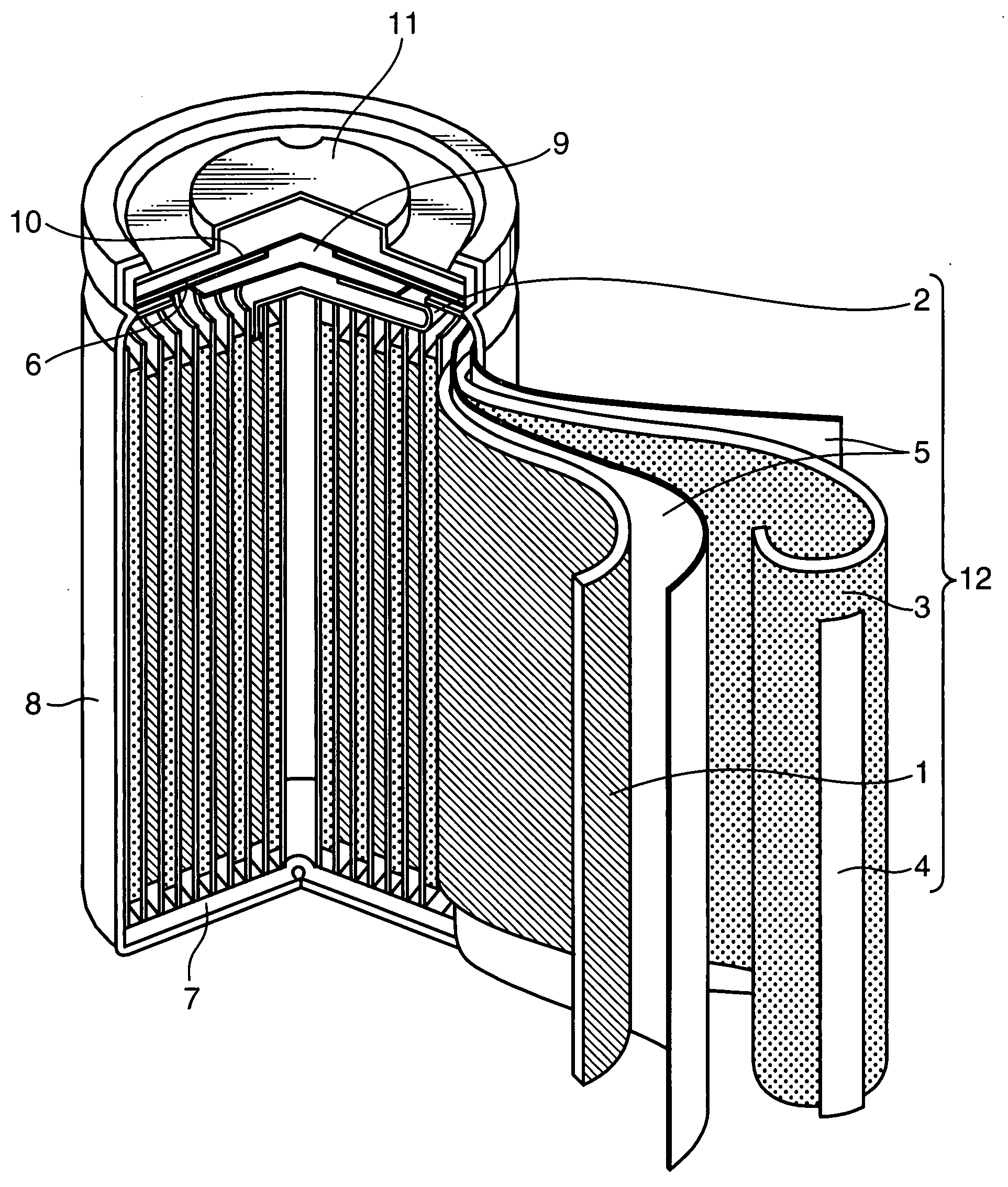Nonaqueous electrolyte secondary battery and method of producing the same
a secondary battery and nonaqueous electrolyte technology, applied in the field of nonaqueous electrolyte secondary batteries, can solve the problems of significant decline in discharge capacity and difficulty in obtaining lithium-ion secondary batteries, and achieve superior discharge rate characteristics, lower deterioration of capacity, and high-temperature storage characteristics.
- Summary
- Abstract
- Description
- Claims
- Application Information
AI Technical Summary
Benefits of technology
Problems solved by technology
Method used
Image
Examples
example 1
Example 1-1
Positive Electrode
[0037]The transition metal-containing composite oxide represented by the compositional formula Li1.05Ni1 / 3Co1 / 3Mn1 / 3O2 prepared by the following method was used as the positive electrode active material.
[0038]Sulfate salts of Co and Mn were added to an aqueous NiSO4 solution at a particular rate, to give a saturated aqueous solution. An alkaline solution containing sodium hydroxide was added dropwise while the saturated aqueous solution was stirred at low speed, to give a precipitate of a ternary hydroxide Ni1 / 3Co1 / 3Mn1 / 3(OH)2 by coprecipitation. The precipitate was filtered, washed with water, and dried in air at 80° C. The average diameter of the hydroxide obtained was approximately 10 μm.
[0039]Then, the hydroxide obtained was heated in air at 380° C. for 10 hours (hereinafter, referred to as primary sintering), to give a ternary oxide Ni1 / 3Co1 / 3Mn1 / 3O. Analysis of the oxide obtained by powder X-ray diffraction showed that the oxide was in a single pha...
example 1-2
[0047]A nonaqueous electrolyte secondary battery of Example 1-2 was prepared in a similar manner to Example 1-1, except that the additive (B) LiBF4 used in Example 1-1 was replaced with MA.
example 1-3
[0048]A nonaqueous electrolyte secondary battery of Example 1-3 was prepared in a similar manner to Example 1-1, except that the additive (B) LiBF4 used in Example 1-1 was replaced with VC.
PUM
| Property | Measurement | Unit |
|---|---|---|
| specific surface area | aaaaa | aaaaa |
| voltage | aaaaa | aaaaa |
| end voltage | aaaaa | aaaaa |
Abstract
Description
Claims
Application Information
 Login to View More
Login to View More - R&D
- Intellectual Property
- Life Sciences
- Materials
- Tech Scout
- Unparalleled Data Quality
- Higher Quality Content
- 60% Fewer Hallucinations
Browse by: Latest US Patents, China's latest patents, Technical Efficacy Thesaurus, Application Domain, Technology Topic, Popular Technical Reports.
© 2025 PatSnap. All rights reserved.Legal|Privacy policy|Modern Slavery Act Transparency Statement|Sitemap|About US| Contact US: help@patsnap.com


